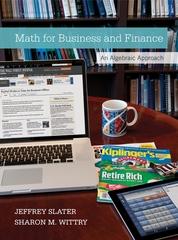
value of natural gas produced at the wellhead. For the purposes of this question, this should be understood as an ad ualorem tax on the consumer price of natural gas. Assume the total amount of natural gas available in Pennsylvania is given by, Q 1,500. There are two periods, a: 1,2. In either period, natural gas producers have total cost given by: cg: sogg- 0.15Qb Demand in period \"is given by: P,P= 4500 ZQQ Assume that property rights are well dened, there are no transportation costs, and that producers and consumers act as price takers. Assume a discount rate of 6%. The governor is considering a severance tax of 1'? = 0.5 x in period 1 and a tax of r; = 0.5(1 3min period 2. Note that the average tax rate across periods (for any value of Jan's always 0.5 (50%), and a larger Xgimply means that more of the burden is placed on period 1 (today) than on period 2 (the distant future). a. For values of X from 0.01 to 0.99: plotX on the x-axis and the efciency costs (the diference between the discounted stream of total welfare due to the competitive equilibrium with the ad valorem tax and discounted stream of total welfare under the no tax competitive equilibrium) due to the ad valorem tax on the y-axis. Separately plot on a second y-axis (but the same gure) the stream of discounted total revenue raised by the tax. (15 points) b. Suppose the governor approaches you and asks you "What should X be in order to minimize the efciency costs from the tax?" What would your answer be? What economic intuition explains this result? (5 points) Now suppose the governor, like many politicians, is especially concerned about the next election cycle (still in period 1) and not the distant future (period 2, for which he can never be governor due to term limits). He thus doesn't especially care about the impact of the tax on citizens in period 2 (of course, he would never tell you this), and he would really like to spend the revenue from the tax in period 1 to help him get re-elected. To this end, suppose: 1. citizens in period 1 receive the entire stream of discounted tax revenue and that those in the second period get nothing, and 2. the governor only considers 85% of the discounted welfare costs of the tax in period 2. c. TvVhatX does the governor select in this case? (3 points) d. How does the e'iciency costs of the tax from c compare to the eiciency costs of the tax from b (report both using the market discount rate)? Explain your results. (3 points) e. if the next governor behaved in the exact same way, what problems might emerge? (4 points) Answer a








